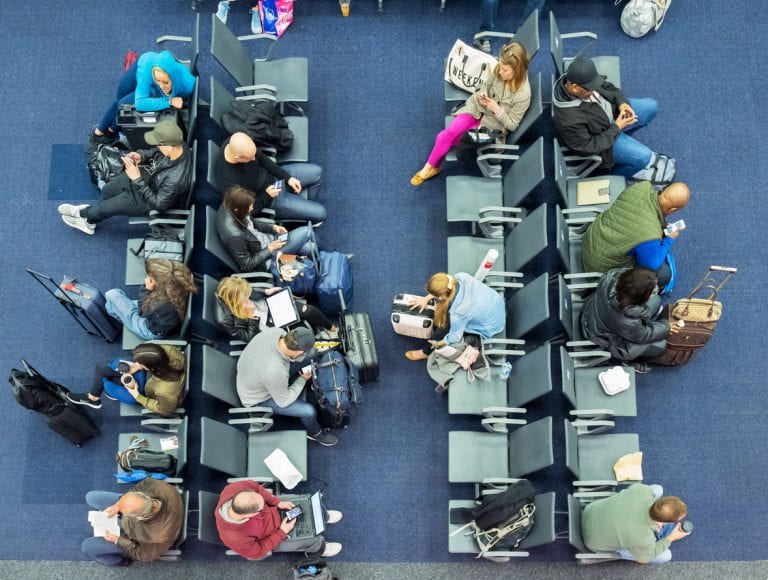Are You More Likely to Get Sick If You Fly?
November 19, 2018

Hopping on a plane can get you to your destination quicker than any other form of transportation. However, this speedy method of travel could also be exposing you to infectious diseases.
Health Risks of Air Travel
It’s easy to forget just how many people are traveling on flights every day — and how many surfaces they are touching in the process! The tray table, seat belt buckle, and overhead air vents can all harbor germs on their surfaces and also be responsible for them spreading.
Unfortunately, it is an airline best practice to pack in as many people as possible in an already tight space, which leaves them exposed to hundreds of different viruses and bacteria.
Without the freedom to roam around and stay away from those who appear sick, your chances of catching an illness go up dramatically.
According to a recent study, a person’s chances of catching the flu increase 80% when sitting in the infected person’s row, one row behind, or one row in front.
How to Protect Yourself against Illnesses on a Plane
The number one way to avoid sickness is to keep your hands away from your nose, mouth, eyes, and face. Since this is easier said than done, make sure that you have plenty of antibacterial gel and use it consistently throughout your flight.
When you arrive at your seat, use it to clean the tray table, armrests, seat belt buckle, and any other surface that you might touch during your flight. Also make sure you use the gel each time before you eat.
For additional air sickness protection, familiarize yourself with the following tips:
1. Take your time boarding
One reason planes are such incubators for sickness is because so many people are crammed into tight quarters for hours on end. This scenario typically starts when it’s time to board.
One study showed that the three-section boarding technique (the most commonly used technique among airlines) is actually the worst strategy for preventing the spread of disease. Instead of jumping in a long line of people trying to get to their seats, hang back and wait for the crowd to die down. This will help reduce your exposure to potential illnesses.
2. Sit by the window
While you might prefer to sit by the aisle so you can easily get to the bathroom, you’ll also have easy access to the viruses and other germs of everyone who walks down the aisle. It may seem rude, but try to avoid talking to strangers as much as possible as well. You never know who may be sick, and many illnesses are airborne.
3. Drink lots of water
Staying hydrated is vital to your health while traveling in many ways, and it can help you avoid getting sick while you’re flying. When it comes to airborne illnesses, the mucous membranes in your mouth and nose need to stay moist in order to do their jobs effectively. In addition to drinking lots of water, consider packing nasal spray in case your nose becomes too dry.
Don’t let the thought of getting sick derail your travel plans. Armed with the information above, you can take precautions to stay as healthy as possible. However, it is always a good idea to get a flu shot every year to minimize risk of infection. Visit your an urgent care center near you to get vaccinated today.
